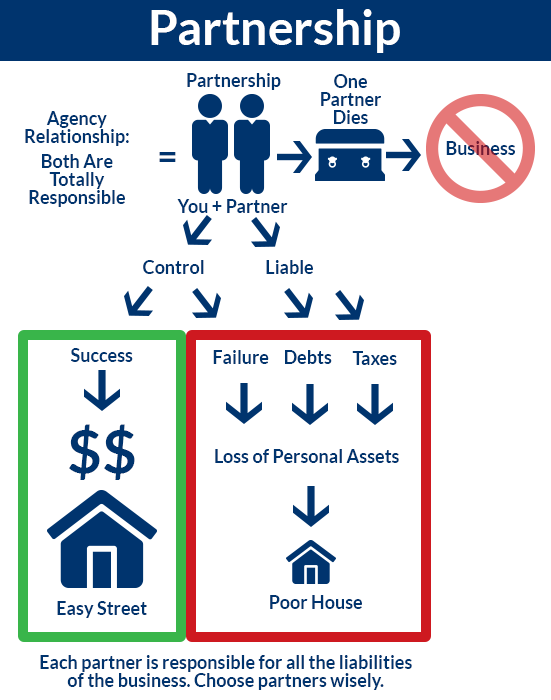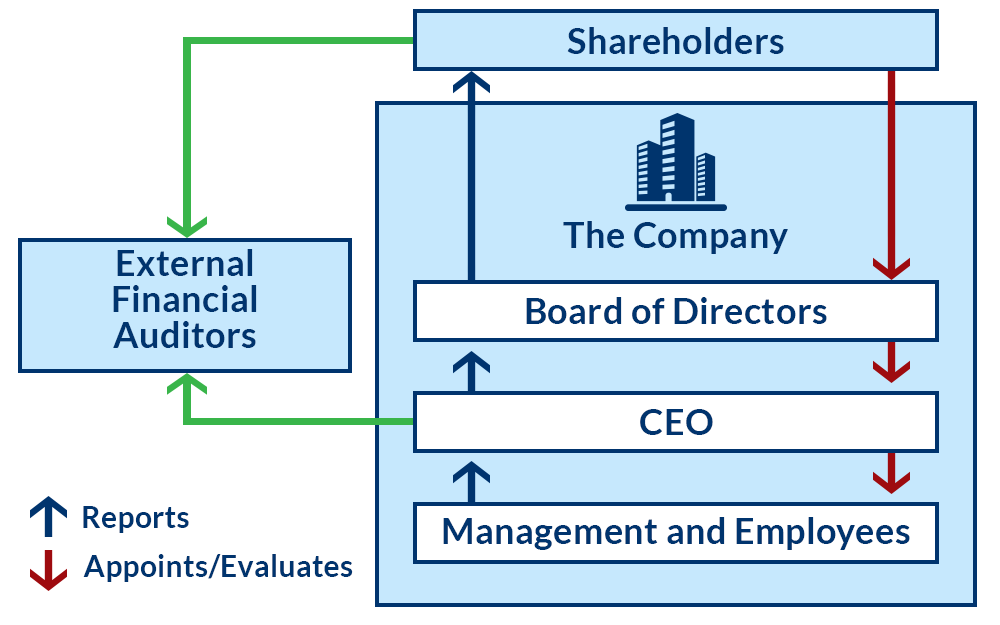Four Types of Business Organizations
Note: This lesson's content uses a slide carousel. Once you have completed the current slide, please click on the subsequent sphere at the top of the carousel to proceed to the next topic.
Business organizations are divided into four categories:
- sole proprietorship,
- partnership,
- corporation (all companies in ACCTG 211 will be corporations), and
- limited liability company (LLC) or limited liability partnership (LLP).
Sole Proprietorship
A sole proprietorship (also called a single proprietorship) is owned by one person who is personally liable for all the business's debts. About 70% of the businesses in the United States are sole proprietorships. Figure 1.1 shows the relationship between the owner and the business in a sole proprietorship.

This is a diagram illustrating a sole proprietorship. It's owned by one person, and that one person is responsible for the success or failure of that company. The owner has full control of the business and reaps all the benefits; the owner is also liable for debts and taxes, which means that his personal assets are at risk and may be sold to pay a debt. When the owner dies, the company dies.
Partnership
A partnership is a business organization that is owned by more than one person. The owners are liable for all the debts of the business. These relationships are reflected in Figure 1.2. About 10% of the businesses in the United States are partnerships.

This is a diagram illustrating a partnership. It is owned by more than one person. The partners have to pay the taxes on any profits of that partnership and share in the successes. The partnership creates what's called an agency relationship, which means that each partner is liable for the other partner's promises, and personal assets are at risk because the partners are the business. One could lose their house if something goes wrong. The death of a partner ends the partnership, unless, of course, within the partnership agreement there is a succession arrangement. Choose partners wisely.
Corporation
A corporation is a separate legal entity in which ownership is divided into shares of stocks. Owners of a corporation are called stockholders or shareholders, because evidence of ownership is expressed with shares of stock. Shareholders are only liable for the amount they invest in the business. Figure 1.3 illustrates the organization of a corporation. About 5% of the businesses in the United State are corporations. However, they are responsible for 62% of the total dollars of business. ( https://taxfoundation.org/corporations-make-5-percent-businesses-earn-62-percent-revenues/ )

This diagram illustrates the organization of a corporation. It is a separate legal entity that requires a formal organization with a board of directors and management to control operations. Owners buy shares that are issued by the corporation. The shareholders may lose capital investment (cost of shares purchased) if the business fails, and they share the profits if it succeeds.
Limited Liability Company (LLC) and Limited Liability Partnership (LLP)
Limited liability companies (LLCs) and limited liability partnerships (LLPs) are hybrid organizations—something between a partnership and a corporation. The primary advantage of LLCs and LLPs is that they have limited liability like corporations, but are taxed like partnerships. LLPs are normally used for professional firms offering accounting, law, and architecture services. LLCs are normally businesses engaged in professions other than those mentioned for LLPs.
Note: In this course, the concepts will be covered from the corporate point of view.
All business organizations have their own set of accounting records (separate from their owners). That means that every business transaction that affects the business has to be recorded in the business’s record. The owner may keep his or her own separate set of records.
Example 1.2
The business entity concept states that MM TAX, the tax firm owned by M. McGruber, must keep its financial records separate from McGruber's personal accounts. This means that MM TAX is not purchasing groceries for McGruber and claiming those as a business expense in its records. The business entity is considered to be separate from its owner, even if it is a sole proprietorship, which implies that the owner is the business and the business is the owner. For accounting purposes, the two are considered to be separate.



